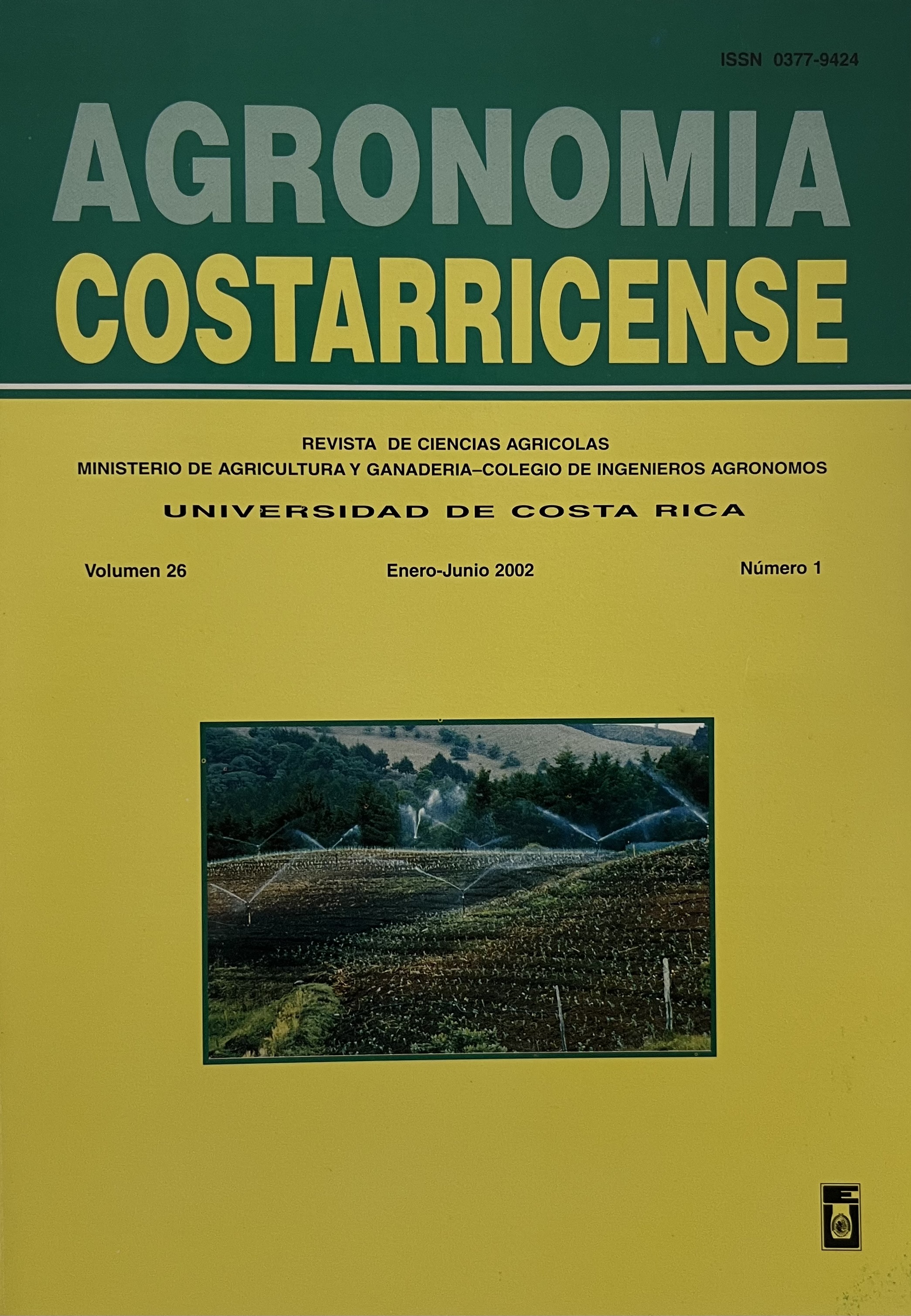Abstract
Mortality and adaptability results at 6 and 12 months'age of a trial with the tree species cypress (Cupressus lusitanica), eucalipto de altura (Eucalyptus globulus), patula pine (Pinus patula), radiatapine (Pinus radiata), costarican alder (Alnus acuminata),sweetcedar (Cedrela tonduzii), tirrá (Ulmus mexicana) anda costarican oak (Quercus coopeyensis), are presented. Each tree species had 4 replicates in each of the 3 major life zones of the Cordillera Volcanica Central of Costa Rica, ranging from 1000 to 2000 m altitude. There was a general trend of higher mortality with an increase in pluviosity. However, the 3 conifers registered after the 6 months' age the lowest mortality (<15%) and higher stability in all 3 life zones; they exhibit a high potential for reforestation in all Cordillera Volcanica Central. Sweet cedar, tirrá and costarican alder conformed a groupof high mortality rate, attaining intermediate stability after 12 months' age. The tree species eucalipto de altura and the costarican oak exhibited the highest mortality rate (>50%) and slower adaptability among all species. However, eucalipto de altura exhibited a strong growth in very wet sites. A stronger seedling quality control in the nursery, as well as the use of such site-planting techniques as individual drainage and soil-beds, are necessary for reforestation at high elevation sites with high pluviosity in Costa Rica.

This work is licensed under a Creative Commons Attribution-NonCommercial-NoDerivatives 4.0 International License.
Copyright (c) 2024 Agronomía Costarricense

